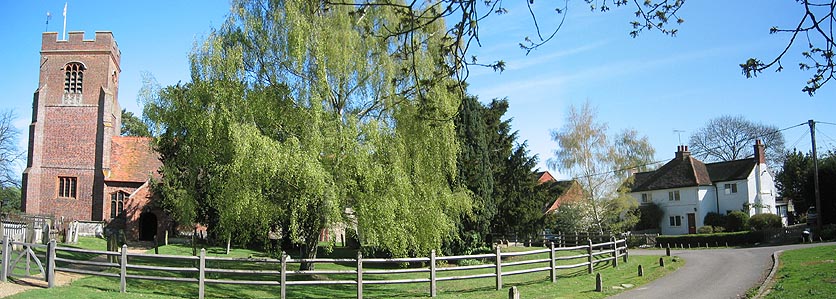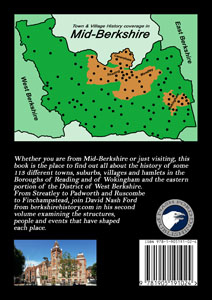 |
 |
||||||||
|
|
The suffix of the name is Celto-Latin 'camp' which appears to have been taken into the Germanic language as meaning an early Anglo-Saxon settlement on the edge of a Roman one. There may perhaps have been a Roman village at the Twyford river crossing. The parish church was anciently a chapel-of-ease to its mother-church at Sonning, owned by Salisbury Cathedral. In the 14th century, Windsor Forest spread as far as Ruscombe and its bounties were a great temptation to the locals. On one occasion, Oliver the Rector was charged at the Forest Court with having shot a large stag with bow and arrow. Parts of the church where he preached survive in the present building, dating from around 1200. The manor house, Ruscombe House, stood where the railway now runs just south of the church. The last house was mostly built in 1787 for the judge, Sir James Eyre, but retained some 16th century parts. William Penn, founder of Pennsylvania, had lived and died there between 1710 and 1718, but this did not prevent it being torn down in 1829. Nearby Stanlake Park is the manor house of Hinton Pipard in Hurst. The medieval house stood within the moat in Botany Bay Copse, part of Ruscombe, but the present building is just in the adjoining parish of St Nicholas Hurst. This beautiful gabled brick H-plan house was built by Richard Aldworth (died 1623), the son of a rich Reading burgess, in 1610. There was supposed to have been a Civil War skirmish in Ruscombe at which Lieutenant George Mynd of Sonning was killed. The parish register records his and twelve other soldiers' burials in the first three months of 1642, so there must have been wounded housed in the village for some time. The villagers were apparently so scared, that they deserted their homes and hid in Ruscombe Lake. It was still full of water then and was not drained until the 18th century. The mysterious tunnels reported in the area may have been used as their escape route. Read more history of Ruscombe and other nearby settlements in David Nash Ford's book, 'Mid-Berkshire Town and Village Histories'. Click to Order direct from the Author.
|
||||||||
| © Nash Ford Publishing 2001; Revised 2020. All Rights Reserved. | |||||||||





